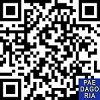EKSPLORASI KEDAMAIAN POSITIF SISWA
Abstract
Abstrak: Penelitin ini bertujuan untuk mengeksplorasi kedamaian positif (positive peace) siswa SMP Yayasan Atikan Sunda Bandung. Ruang lingkup penelitian ini mencakup kedamaian positif (positive peace) yang mencakup peacebuilding, peacemaking dan peacekeeping. Metode penelitian yang digunakan deskriptif dengan pendekatan kuantitatif. Sampel penelitian ini terdiri dari 340 siswa SMP Yayasan Atikan Sunda Bandung. Pengumpulan data menggunakan instrument kedamaian positif. Analisis data menggunakan statistik deskriptif. Hasil penelitian ini pertama, profil kedamaian positif (positive peace) siswa SMP Yayasan Atikan Sunda berada pada kategori tinggi. Kedua, gambaran profil aspek kedamaian positif ialah dua diantara tiga aspek kedamaian positif berada pada kategori tinggi antara lain aspek peacekeeping, disusul aspek peacebuilding, sedangkan aspek peacemaking berada pada kategori sedang. Ketiga, berdasarkan hasil wawancara dengan guru di SMP Yayasan Atikan Sunda menunjukkan bahwa pendekatan yang dilakukan guru mata pelajaran terutama rumpun ilmu sosial dan muatan lokal memiliki dampak pada kedamaian positif (positive peace) siswa dengan pelbagai pendekatan pembelajaran seperti dialog, komunikasi, dan role play. Adapun dalam muatan lokal yang berbasis kebudayaan sunda terdapat nilai-nilai kedamaian yang disemai dalam kegiatan pencak silat dan permainan tradisional.
Abstract: Purpose of the research to explore the positive benefits of students at the Yayasan Atikan Sunda Junior High School in Bandung. The scope of this research includes positive peace which includes peacebuilding, peacemaking, and peacekeeping. The research method used is descriptive with a quantitative approach. The sample of this study consisted of 340 students of SMP Yayasan Atikan Sunda, Bandung. Data collection uses positive goodness instruments. Data analysis used descriptive statistics. The results of this study first, the positive profile (positive peace) students of SMP Yayasan Atikan Sunda is in the high category. Second, the good profile picture between the two positive aspects is in the category, including the peace aspect, while the peace aspect is in the category. Third, based on the results of interviews with teachers at Yayasan Atikan Sunda, it shows that the approach taken by subject teachers, especially social science groups and local content, has a positive impact on students with various learning approaches such as dialogue, communication, and role play. As for local content based on Sundanese culture, there are life values that are sown in pencak silat activities and traditional games
Keywords
Full Text:
PDFReferences
Abdu’l-Bahá (1961) Paris talks (10th edn). London: Baha’i Publishing Trust.
Berlowitz, M. (1994) Urban educational reform: focusing on peace education, Education and Urban Society, 27(1), 82–95.
Boulding, E., B. Brock-Utne, and the Project ‘Preparedness for Peace’. (1989). “Peace Education, Images of the Future and Women’s Roles.” Educational and Psychological Interactions 96: 1–18.
Brantmeier, E. J. (2005). Constraints and Possibilities for Intercultural Peace Curricula: A Critical Case Study of Teacher Involvement in Multicultural Change at Midwestern high School. Unpublished diss., Indiana University.
Brantmeier, E. J. (2007). Everyday understandings of peace and non‐peace: peacekeeping and peacebuilding at a US Midwestern high school. Journal of Peace Education, 4(2), 127–148. https://doi.org/10.1080/17400200701523520
Brantmeier, E. J. (2013). Toward a critical peace education for sustainability. Journal of Peace Education, 10(3), 242–258. https://doi.org/10.1080/17400201.2013.862920
Carnegie Council on Adolescent Development. (1995). Great transitions: Preparing adolescents for a newcentury. New York: Carnegie Corporation.
Cochran-Smith, M. (2009). “Toward a Theory of Teacher Educational Change.” In Second Handbook of Educational Change, edited by A. Hargreaves, A. Lieberman, M. Fullan, and D. Hopkins, 445–467. New York: Springer. doi:10.1007/978-90-481-2660-6_27.
Crawford, P. A. (2005). “Primarily Peaceful: Nurturing Peace in the Primary Grades.” Early Childhood Education Journal 32 (5): 321–328.
Eisenberg, N., & Strayer, J. (1987). Critical issues in the study of empathy. In N. Eisenberg, & J. Strayer (Eds.), Empathy and its development (pp. 3-16). New York: Cambridge University Press.
Feshbach, N. D., & Feshbach, S. (2009). Empathy and educa- tion. In J. Decety, & W. Ickes (Eds.), The social neuroscience of empathy (pp. 85-98). Cambridge: The MIT Press
Galtung. (1967). Theories of Peace A Synthetic Approach to Peace Thinking. Oslo: International Peace Research Institute.
Galtung, J. & Hveem, H. (1976) Participants in Peace-Keeping Forces. Cooperation and Conflict, XI, 25-40.
Galtung, J. (1996). Peace by peaceful means: Peace and conflict, development and civilization. International Peace Research Institute Oslo; Sage Publications, Inc.
Goulah, J., and O. Urbain. (2013). “Daisaku Ikeda’s Philosophy of Peace, Education Proposals, and Soka Education: Convergences and Divergences in Peace Education.” Journal of Peace Education 10 (3): 303–322. doi:10.1080/17400201.2013.848072
Harris, I. A. (1999) Types of peace education, in: A. Raviv, L. Oppenheimer & D. Bar-Tal (Eds) How children understand war and peace (San Francisco, CA, Jossey-Bass).
Harris, I. M. (2004) Peace education theory, Journal of Peace Education, 1(1), 2–20.
Harris, I. (2002) Conceptual underpinnings of peace education, in: G. Salomon & B. Nevo (Eds) Peace education: the concept, principles, and practices around the world (New York, Lawrence Erlbaum) pp. 15–26.
Harris, I. M. & Synott, J. (2002), Peace education for a new century, Social Alternatives, 21(1), 3–10.
Hoffman, M. L. (2000). Empathy and moral development: Impli- cations for caring and justice. New York: Cambridge University Press.
Johnson, D. W., & Johnson, R. (2010). Peace education in the classroom: creating effective peace education programs. In G. Salomon & E. Cairns (Eds.), Handbook of peace education (pp.223-240), New York: Psychology Press.
Kartadinata, Sunaryo dkk. (2015). Pendidikan Kedamaian. Bandung: Rosda.
Kartadinata, Sunaryo dkk. (2018). Pedagogi Pendidikan Kedamaian: Rujukan Pengembangan Sekolah Aman dan Damai. Bandung: UPI Press
Lewsader, J., & Myers-Walls, J. A. (2017). Developmentally appropriate peace education curricula. Journal of Peace Education, 14(1), 1–14.
Mas'ad, Nizar, & Aini. (2016). Mengidentifikasi Faktor Yang Mempengaruhi Peningkatan Migrasi Internasional Di Desa Mekar Damai Kecamatan Praya Kabupaten Lombok Tengah Tahun 2015. Paedagoria : Jurnal Kajian, Penelitian dan Pengembangan Kependidikan. 7 (1).
Montessori, M. (1949). Education and Peace, Trans. H.R. Lane. Chicago, IL: Henry Regerny.
Mulyatno, C.B, (2012). Filsafat Perdamaian. Yogyakarta: Kanisius.
Reardon, B. (1988). Comprehensive Peace Education: Educating for Global Responsibility. New York, NY: Teachers College Press
Reardon, B. (1997). Human rights as education for peace. Human rights education for the twenty-first century
Republik Indonesia. 1945. Undang-Undang Dasar Negara Republik Indonesia
Republik Indonesia. 2003. Undang-Undang No.20 Tahun 2003 Tentang Sistem Pendidikan Nasional. Secretariat Negara. Jakarta
Saǧkal, A. S., Türnüklü, A., & Totan, T. (2012). Empathy for interpersonal peace: Effects of peace education on empathy skills. Kuram ve Uygulamada Egitim Bilimleri, 12(2), 1454–1460.
Saifuddin, S. (2018). Pengembangan Bahan Khutbah Berbasis Peace Education Sebagai Upaya Mereduksi Terorisme dan Radikalisme Agama: Pengembangan Bahan Khutbah Berbasis Peace Education. AL-WIJDÁN: Journal of Islamic Education Studies, 3(1), 21–32. https://doi.org/10.12345/alwijdn.v3i1.125
Saifuddin, S. (2021). Peace Education dan Pesantren: Peluang dan Tantangan Pesantren Dalam Mengajarkan Perdamaian: Peace Education dan Pesantren. AL-WIJDÁN: Journal of Islamic Education Studies, 6(2), 183–194. https://doi.org/10.12345/alwijdn.v6i2.1153
Salomon, G. (2002) The nature of peace education: not all programs are equal, in: G. Salomon & B. Nevo (Eds) Peace education: the concept, principles, and practices around the world (New York, Lawrence Erlbaum) pp. 3–14.
Salomon, G. (2003) Does peace education make a difference in the context of an intractable conflict?, presented at the Cleveringa leerstoel Ceremony, University of Leiden. Available online at: http://www.nieuws.leidenuniv.nl/content_docs/nov._2003_rede_salomon.pdf (accessed 1 February 2006).
Sautter, R. (1995). Standing uptoviolence. Kappan Special Report, January, K1-K12.
Septian, M. R., & Budiman, A. (2021). Tolerance In Madrasah Students Based On Sreligious Organization Affiliates. JOMSIGN: Journal of Multicultural Studies in Guidance and Counseling, 5(2), 43–61. https://doi.org/10.17509/jomsign.v5i2.35063
Shapiro, Daniel. (2002). Negotiating Emotions. Conflict Resolution Quarterly. 20 (1): 67-82.
Shannon-Baker, P. (2012). “Elise Boulding’s Work as A Framework for Dismantling No Child Left Behind: Respect, Solitude, Imagination and Partnerships.” Journal of Peace Education 9 (2): 169–184
Shields, P. (2017). Limits of negative peace, faces of positive peace. Parameters, 47(3), 1–12.
Soonjung Kwon, David Ian Walker & Kristján Kristjánsson (2017): Shining light into dark shadows of violence and learned helplessness: peace education in South Korean schools, Journal of Peace Education, DOI:10.1080/17400201.2017.1373252
Synott , J. (2005). Peace education as an educational paradigm: review of a changing field using an old measure. Journal of Peace Education, 2(1), 3–16. https://doi.org/10.1080/1740020052000341786
Synott, J. (2019). Positive peace in schools. Journal of Peace Education, 16(1), 127–129. https://doi.org/10.1080/17400201.2019.1573567
Urbain, O. (2016). A statement of values for our research on music in peacebuilding: a synthesis of Galtung and Ikeda’s peace theories. Journal of Peace Education, 13(3), 218–237. https://doi.org/10.1080/17400201.2016.1256942
UNESCO (1998) Transdisciplinary project. Towards a culture of peace. Available online at: http:// www.unesco.org/cpp/uk/projects/infoe.html (accessed 22 February 2005).
UNESCO (2001) terbaru yang berjudul learning the way of peace: A teacher’s guide to peace education, A Report. New Delhi: UNESCO.
United Nations (1998) Culture of Peace (A/Res/52/13, 15 January 1998, para. 2). Available online at: http://www3.unesco.org/iyep/uk/uk_sum_refdoc.htm
DOI: https://doi.org/10.31764/paedagoria.v15i1.19844
Refbacks
- There are currently no refbacks.
Copyright (c) 2024 Muhammad Rezza Septian

This work is licensed under a Creative Commons Attribution-ShareAlike 4.0 International License.
Paedagoria : Jurnal Kajian, Penelitian dan Pengembangan Kependidikan
Fakultas Keguruan & Ilmu Pendidikan | Universitas Muhammadiyah Mataram.
_______________________________________________
 | Paedagoria : Jurnal Kajian, Penelitian dan Pengembangan Kependidikan |
______________________________________________
CURRENT INDEXING:
EDITORIAL OFFICE:


















